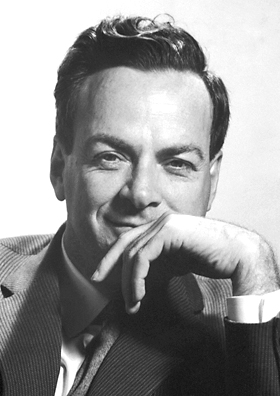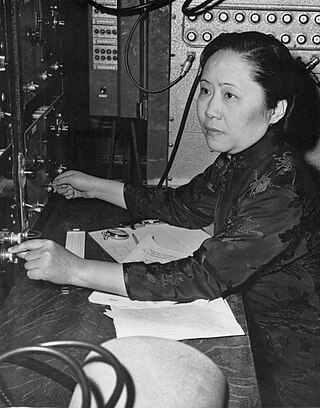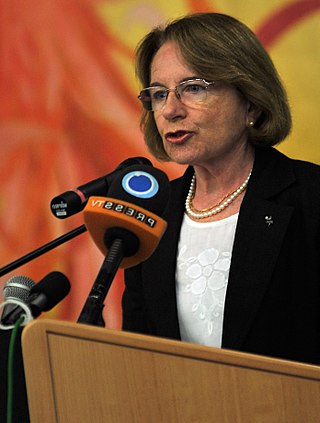
Erwin Rudolf Josef Alexander SchrödingerForMemRS HonMRIA, sometimes written as Schroedinger or Schrodinger, was a Nobel Prize–winning Austrian and naturalized Irish physicist who developed fundamental results in quantum theory. In particular, he is recognized for postulating the Schrödinger equation, an equation that provides a way to calculate the wave function of a system and how it changes dynamically in time. He coined the term "quantum entanglement", and was the earliest to discuss it, doing so in 1932.

Maria Salomea Skłodowska-Curie, known simply as Marie Curie, was a Polish and naturalised-French physicist and chemist who conducted pioneering research on radioactivity. She was the first woman to win a Nobel Prize, the first person to win a Nobel Prize twice, and the only person to win a Nobel Prize in two scientific fields. Her husband, Pierre Curie, was a co-winner of her first Nobel Prize, making them the first married couple to win the Nobel Prize and launching the Curie family legacy of five Nobel Prizes. She was, in 1906, the first woman to become a professor at the University of Paris.

A physicist is a scientist who specializes in the field of physics, which encompasses the interactions of matter and energy at all length and time scales in the physical universe. Physicists generally are interested in the root or ultimate causes of phenomena, and usually frame their understanding in mathematical terms. They work across a wide range of research fields, spanning all length scales: from sub-atomic and particle physics, through biological physics, to cosmological length scales encompassing the universe as a whole. The field generally includes two types of physicists: experimental physicists who specialize in the observation of natural phenomena and the development and analysis of experiments, and theoretical physicists who specialize in mathematical modeling of physical systems to rationalize, explain and predict natural phenomena.

Paul Adrien Maurice Dirac was an English mathematical and theoretical physicist who is considered to be one of the founders of quantum mechanics and quantum electrodynamics. He is credited with laying the foundations of quantum field theory. He was the Lucasian Professor of Mathematics at the University of Cambridge, a professor of physics at Florida State University and the University of Miami, and a 1933 Nobel Prize in Physics recipient.

Richard Phillips Feynman was an American theoretical physicist, known for his work in the path integral formulation of quantum mechanics, the theory of quantum electrodynamics, the physics of the superfluidity of supercooled liquid helium, as well as his work in particle physics for which he proposed the parton model. For his contributions to the development of quantum electrodynamics, Feynman received the Nobel Prize in Physics in 1965 jointly with Julian Schwinger and Shin'ichirō Tomonaga.

Max Born was a German-British physicist and mathematician who was instrumental in the development of quantum mechanics. He also made contributions to solid-state physics and optics and supervised the work of a number of notable physicists in the 1920s and 1930s. Born was awarded the 1954 Nobel Prize in Physics for his "fundamental research in quantum mechanics, especially in the statistical interpretation of the wave function".

Technische Universität Berlin is a public research university located in Berlin, Germany. It was the first German university to adopt the name "Technische Universität".

Chien-Shiung Wu (Chinese: 吳健雄; pinyin: Wú Jiànxióng; Wade–Giles: Wu2 Chien4-hsiung2; May 31, 1912 – February 16, 1997) was a Chinese-American particle and experimental physicist who made significant contributions in the fields of nuclear and particle physics. Wu worked on the Manhattan Project, where she helped develop the process for separating uranium into uranium-235 and uranium-238 isotopes by gaseous diffusion. She is best known for conducting the Wu experiment, which proved that parity is not conserved. This discovery resulted in her colleagues Tsung-Dao Lee and Chen-Ning Yang winning the 1957 Nobel Prize in Physics, while Wu herself was awarded the inaugural Wolf Prize in Physics in 1978. Her expertise in experimental physics evoked comparisons to Marie Curie. Her nicknames include the "First Lady of Physics", the "Chinese Madame Curie" and the "Queen of Nuclear Research".

Willis Eugene Lamb Jr. was an American physicist who won the Nobel Prize in Physics in 1955 "for his discoveries concerning the fine structure of the hydrogen spectrum." The Nobel Committee that year awarded half the prize to Lamb and the other half to Polykarp Kusch, who won "for his precision determination of the magnetic moment of the electron." Lamb was able to precisely determine a surprising shift in electron energies in a hydrogen atom. Lamb was a professor at the University of Arizona College of Optical Sciences.

Dame Susan Jocelyn Bell Burnell is an astrophysicist from Northern Ireland who, as a postgraduate student, discovered the first radio pulsars in 1967. The discovery eventually earned the Nobel Prize in Physics in 1974; however, she was not one of the prize's recipients.

Moscow Institute of Physics and Technology, is a public research university located in Moscow Oblast, Russia. It prepares specialists in theoretical and applied physics, applied mathematics and related disciplines.

Black Holes & Time Warps: Einstein's Outrageous Legacy is a 1994 popular science book by physicist Kip Thorne. It provides an illustrated overview of the history and development of black hole theory, from its roots in Newtonian mechanics until the early 1990s.

This article discusses women who have made an important contribution to the field of physics.

Ana María CettoKramis is a Mexican physicist and professor. Her work specializes in quantum mechanics, stochastic theory, electrodynamics, and biophysics of light. She is also known for her work as a pacifist and activist for women in science. From 2003 to 2010 she was Deputy Director General of the International Atomic Energy Agency (IAEA). She was also professor and director at the Faculty of Sciences at the National Autonomous University of Mexico (UNAM), from 1979-1982. Cetto Kramis is responsible for several scientific literature programs in Latin America and for several international programs on the promotion and participation of women in physics.

Beth A. Brown was a NASA astrophysicist with a research focus on X-ray observations of elliptical galaxies and black holes. She earned a Ph.D. in Astronomy from the University of Michigan in 1998, becoming the first African-American woman to do so.

Sabrina Gonzalez Pasterski is an American theoretical physicist from Chicago who studies high energy physics. She describes herself as "a proud first-generation Cuban-American and Chicago Public Schools alumna". Her first few months at Harvard's Center for the Fundamental Laws of Nature (2014) resulted in discovery of the spin memory effect which predates LIGO's reported discoveries and may be proven as an inexpensive way to detect as well as verify gravitational waves and their net effects during a very rare celestial gravitational lensing event the first week of May 2028 if not sooner via Advanced LIGO Since leaving Harvard, Pasterski has pioneered Celestial Holography. She completed her undergraduate studies in three years while still a teenager at the Massachusetts Institute of Technology (MIT), earned her PhD from Harvard University and was a PCTS Postdoctoral Fellow at Princeton University before joining the faculty of the Perimeter Institute at age 27. According to Google Trends, Pasterski was the #3 Trending Scientist for all of 2017. In 2015, she was named to the Forbes 30 under 30 Science list, named a Forbes 30 under 30 All Star in 2017, and returned as a judge in 2018 as part of Forbes' first ever all-female Science category judging panel.
Amy Shira Teitel is a Canadian author, popular science writer, historian, and YouTuber.

Arianna Wright Rosenbluth was an American physicist who contributed to the development of the Metropolis–Hastings algorithm. She wrote the first full implementation of the Markov chain Monte Carlo method.

This is a timeline of women in science, spanning from ancient history up to the 21st century. While the timeline primarily focuses on women involved with natural sciences such as astronomy, biology, chemistry and physics, it also includes women from the social sciences and the formal sciences, as well as notable science educators and medical scientists. The chronological events listed in the timeline relate to both scientific achievements and gender equality within the sciences.


















